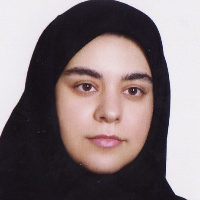Quantitative Achievements in Clinical Postgraduate Medical Education Over Last 4 Decades in I.R.IRAN
Following the Islamic revolution in 1979, great advances have been made in Clinical Postgraduate Medical Education. Despite the significant achievements, there has been no comprehensive documentation of the growth trends. This study aimed to describe and analyze the quantitative development in Postgraduate Medical Education in I.R.IRAN over the last 4 decades.
A comprehensive growth trend analysis was conducted, via the Academy of Medical Sciences of IR Iran. First-hand data were obtained from the Council on Medical Education& Specialty training of the Ministry of Health and Medical Education, and the Medical Council of Iran. Specialty and subspecialty training growth rates within the different disciplines and physician-to-population growth trends were calculated.
Clinical postgraduate training disciplines have increased from 18 specialties in 1979 to 27 specialty disciplines in 2016, and from 1 subspecialty discipline in 1985 (the establishment of first subspecialty training programs ) to 25 subspecialties and 55 fellowship disciplines in 2016. The total number of residents admitted to specialties subspecialties and fellowships increased from 600 in 1986 to 3500 in 2015. ( 485 %. percentage increase). Women constituted about 55 % of admitted residents to specialty programs and 35 % of admitted specialists to subspecialty programs in 2016. Between 1979 and 2016, the number of specialists has increased by 333%., the number of sub-specialists has increased by 589% and the percentage increase per 100,000 populations was 112.61 %.
The results revealed that, over the last 4 decades, Iran has had significant quantitative progress in postgraduate medical education. Iran’s postgraduate medical-education system is successful and self-sufficient in providing medical manpower to serve Iranian people in different specialties and subspecialty medical fields. Along with this development, the number of Iranian female specialists and sub-specialists significantly increased to fulfil the female patient’s request for same gender physicians.
- حق عضویت دریافتی صرف حمایت از نشریات عضو و نگهداری، تکمیل و توسعه مگیران میشود.
- پرداخت حق اشتراک و دانلود مقالات اجازه بازنشر آن در سایر رسانههای چاپی و دیجیتال را به کاربر نمیدهد.


